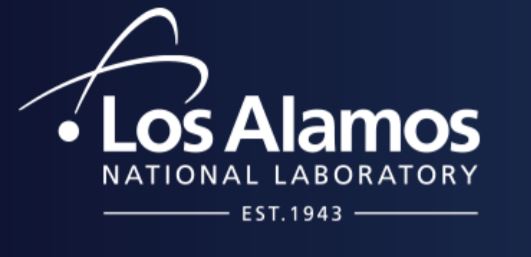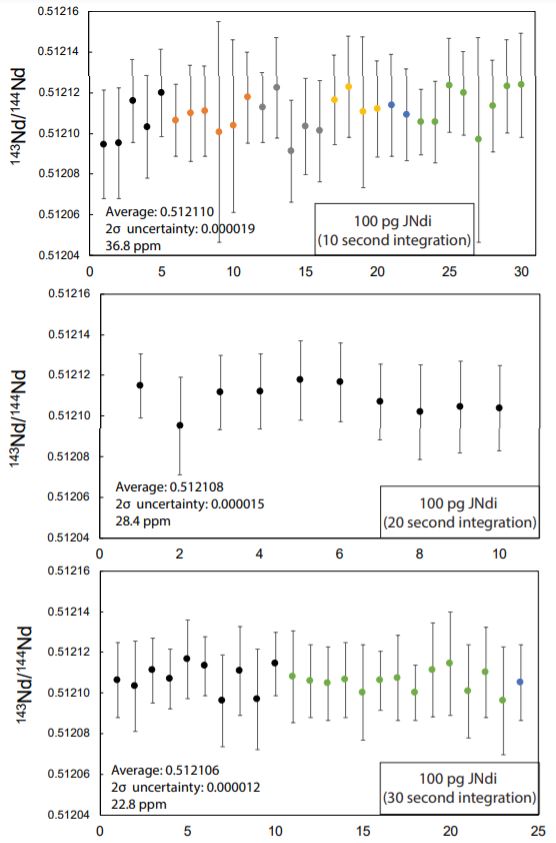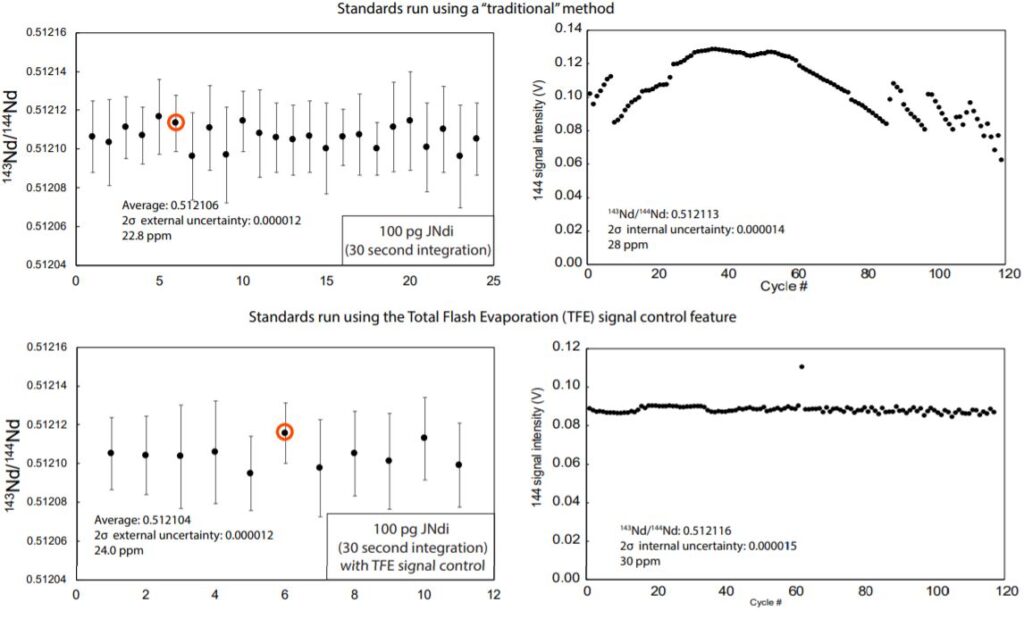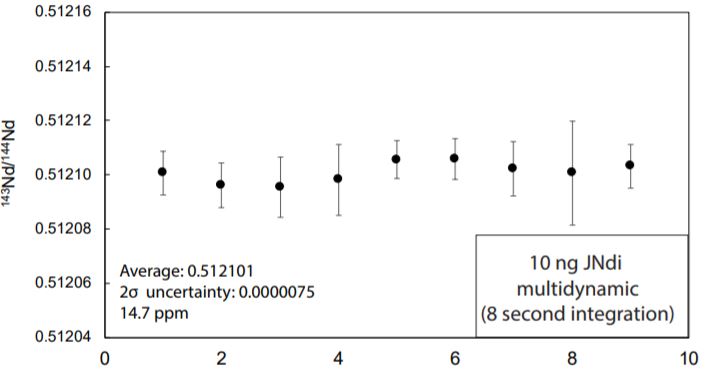Andrew A. Reinhard 1, Jeremy D. Inglis1, Robert E. Steiner1, Stephen LaMont1, Matthew G. Jackson2
1Nuclear and Radiochemistry, Los Alamos National Laboratory 2Department of Earth Science, University of California Santa Barbara

Motivation
In the last several years new amplifier technologies have been released for thermal ionization mass spectrometers (TIMS) including the ATONA amplifiers produced by Isotopx. One of the Isotopx TIMS housed in the Nuclear and Radiochemistry (C-NR) group at Los Alamos National Laboratory (LANL) was upgraded with the new ATONA amplifiers; this study is our initial effort to identify how these amplifiers can be best utilized for the variety of work undertaken by the C-NR group at LANL; particularly for high precision analyses of very small samples. ATONA amplifiers utilize a capacitor in the feedback loop instead of a standard high-ohmage resistor, which results in a theoretical relationship between the effective signal to noise ratio and the integration time of the detectors. Here we examine how integration time affects analytical uncertainty in measured standards as a proxy for signal to noise. All standard analyses presented here were run as NdO, and loaded using the method described in Harvey and Baxter (2009).
Effect of integration time on analytical uncertainty

Signal stability and analytical uncertainty

Multidynamic analysis of larger standards

Conclusions
This work demonstrates the ability of the ATONA amplifiers to precisely measure small ion beams. We find that selecting an appropriate integration time for each cycle has a considerable effect on the external and internal uncertainties of 143Nd/144Nd measurements. Increasing the integration time can significantly decrease the external uncertainty for measuring 100pg loads of JNdi; however, an excessively long integration time can negatively affect internal analytical uncertainty. Interestingly, the signal stability does not appear to significantly impact the internal or external analytical uncertainty associated with these measurements. This is a useful when running very small samples (<100 pg) where maintaining a stable ion beam can be particularly challenging. We also note that this amplifier technology is promising for larger loads and multi-dynamic analyses where we find we can achieve high precision measurements on JNdi loads of 10ng using the ATONA amplifiers.
References
Harvey, J., Baxter, E.F., 2009. An improved method for TIMS high precision neodymiumisotope analysis of very small aliquots (1–10 ng). Chemical Geology 258, 251–257.